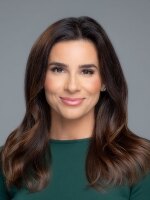KPBS Anchor Maya Trabulsi and author Kwame Alexander discuss his book, “The Crossover,” which was selected as KPBS’s One Book For Teens.
Q: Let's talk about reading. I have a ravenous reader but I also have another child who, forgive the pun, uses every excuse in the book not to read. What advice would you give to a parent who is suffering the same as I am?
A: Books are amusement parks and sometimes you have to let kids choose the rides. It's not about getting a kid to read the book we think they want to read. Find the book that's going to connect with them. Find out what about that book is going to make that kid feel engaged, inspired and empowered.
My mother got it. My father didn't get it. My father made me read his college dissertations. He made me read books in the dictionary and in the encyclopedia. And I had teachers like that. I just think adults, parents, teachers, librarians and educators — we've got to help kids find those books that are not just going to make them read, but make them want to read. And that requires us to know our kids. Do they play basketball? Are they into gaming? Do they like flowers? Do they like birds? Do they like animals, dogs? And find those books that are going to have some of those themes, those topics that are going to make them feel sort of cool and want to read more.
Q: Your book, “The Crossover,” is part of KPBS One Book For Teens and it's got a unique narration style where you use long-form poetry. Tell us about how that nuanced storytelling draws people in.
A: I think poetry is rhythmic. It's concise, it's short and to the point. You talk about sort of really heavy things and you can do it in a few words. There's a lot of white space and so even the most reluctant of readers can say, “Well, I can get through that. I can make it through that.”
It's not intimidating to the eye. I think poetry builds confidence. I think it triggers a voice. My mother read to me a lot of poetry growing up. It's how I learned how to communicate. If you think about it, it's how most of us learn how to communicate when we're little … speaking, listening, reading and writing, by the lullabies and nursery rhymes and in that kind of thing.
I think where I finally realized that poetry was the thing that I wanted to do, to be a part of, I was in college and I met this girl, and she was beautiful. And I wanted to let her know that, but I was kind of shy. So I wrote her a poem. And she ended up marrying me. Poetry works.
Q: I'd like to talk about “The Crossover,” which is the book that we're using here at KPBS to get kids into reading. What would they love about this book?
A: Well, I think every kid has some relationship to basketball. They either play it, they know somebody who plays it or they watch it. So there's already that connection. And I think that what I tried to do in “The Crossover” is use basketball as a metaphor for our lives.
And I think if a kid hears or reads, “Dribble, fake, shoot, miss. Dribble, fake, shoot, miss. Dribble, fake, shoot, miss. Dribble, fake, shoot, swish.” I think they're gonna get it. And that's what I want.
I want kids to come away from this book thinking, “Yeah, I get it. I've got to say yes to life. I've got to treasure my family. I have to be a star in my mind and I have to let it shine.”







